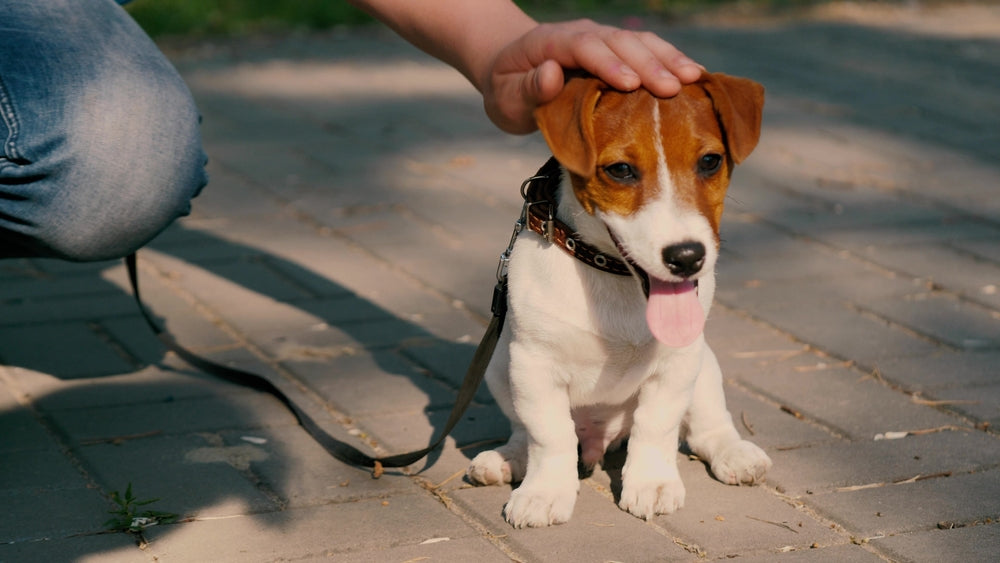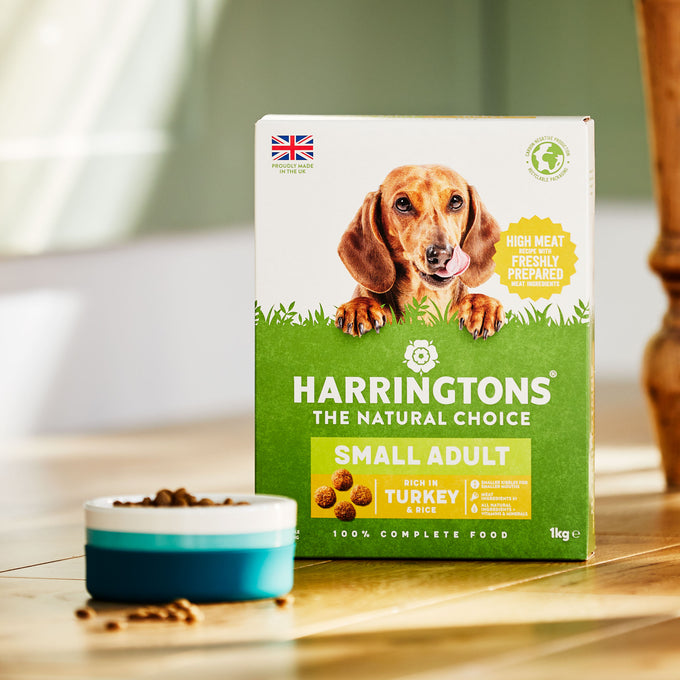So your new puppy has joined the family, how exciting! You probably can’t wait to take your puppy for the first walk but you may also be concerned what to do or not to do to give them the best start in life. In this blog we'll cover everything you should know about puppy walks.
Puppy quarantine
Puppy quarantine is the period when a dog is most prone to viruses and bacteria from the environment or other dogs because they are losing antibodies received in the milk from their mum and are in a process of developing new antibodies between vaccinations.
Your vet will advise you to restrict your puppy’s walks to your garden for some time during the vaccination schedule to eliminate the risk, but it doesn’t mean you can't take your puppy out. It's extremely important to show the world to puppies before they reach 12 weeks of age. You can carry your puppy in your arms or a bag when walking or just have your puppy sat on your lap while you are both watching the world passing by.
Your puppy doesn’t need to interact with anything, they can see, hear and smell for only 10-15 minutes a day to be safely and effectively socialised before they can be walked outside your premises.
Why is it so important?
Puppies must be exposed to various stimuli such as other people, other dogs, other animals, traffic, noises and smells to teach them to ignore these stimuli in everyday life instead of reacting to them with fear or over-excitement. This exposure must be a positive or neutral experience for a puppy and shouldn’t create any negative emotions.
Early socialisation starts at 3 weeks and lasts up to 12 weeks of age for an average dog. Between 12 and 16 weeks the socialisation window closes and this process slows down dramatically. After that puppies will naturally avoid and react with fear towards stimuli they have not experienced before. At the time when the vaccination schedule ends the socialisation window closes. An early and mindful socialisation will prevent serious behavioral problems in dogs.
Exercise
Puppies require less structured exercise compared to adult dogs. While they may appear full of energy, lengthy walks during their early stages can be dangerous to their soft bones and joints. As you get to know your pooch better, you'll discover the right amount of exercise for them. The secret formula that many owners don’t know, however, is to provide about five minutes of formal exercise per month of age, with twice-daily sessions. For example, a two-month-old puppy needs 10 minutes of exercise twice daily. A three-month-old puppy would need 15 minutes (and so on).
Your walk can of course last longer but equip yourself with a comfy carry bag or basket or just spend some time sat on the grass with your puppy watching people, other dogs, traffic, bikes, children playing from a safe distance so your puppy has the time to process everything without being overwhelmed.
Along with this secret formula, here’s some practical advice for you to put into action to ensure your dog walking training is successful.
Monitor your pup’s energy levels
Every puppy - no matter their breed – will have different energy levels throughout the day. Pay attention to your puppy's behaviour. Most puppies will have endless energy towards the end of the day but this may be a sign of being overstimulated. Young pups need plenty of nap time throughout the day but they also need a quiet spot to settle down.
If your puppy gets super bitey and impossible to calm down think what happened during the day, how long they slept, how much time you spent on your walks, who you met and what your puppy’s reaction was. Remember, the secret formula is the quality not the quantity!
Walkies equipment
If you want your dog to be walked on a collar in their adult life it's best to start with a well fitted harness until your dog is fully trained to walk on a loose lead. Your puppy can wear a collar to get used to it but, to avoid injures during uncontrolled pulling or recall training on a long line, it’s best to attach the lead to the harness.
A guard (Y shape) type harness with two points of contact (one on the chest and one on the back) will be an invaluable training tool to train your dog to walk by your side.
Training on walks
Do you remember the old saying “You can’t teach an old dog new tricks”? Of course you can! There will always be time for formal training, what you should focus on when your puppy is young is socialisation and life skills. It’s ok to start training early but remember, you only have a few weeks between your puppy’s arrival and when the socialisation window closes. Use this time effectively and show your puppy as many things as you can think of introducing them at your puppy’s own peace with a lot of rewards for being brave.
When it’s time to train use positive reinforcement techniques such as food, play, your attention and voice. Blend training exercises into your walk, such as practising basic commands like sit, stay, or come. This mental stimulation can tire your puppy out as much as physical exercise.
Meet & Greet
The word “socialisation” may be banging in your head now creating a lot of pressure to meet as many dogs of different shapes and sizes as possible. But this isn’t about unlimited puppy play to “socialise” dogs with each other. This can lead to over-excitement or frustration when there are times dogs can’t interact. Short greetings on walks will help you with socialisation. It is a process of early habituation and desensitisation, by allowing your puppy to approach another dog (only if they want to) and to say a quick hello, then moving on. There's no time to be too scared or too excited and meeting other furry pals calmly on walks becomes a norm.
Here is the secret formula to a well balanced dog who doesn’t go crazy or becomes fearful when they see another dog: “The 3-second rule”. Have your puppy on a loose lead, try to avoid any tension when greeting another dog. They may touch each other with their noses or sniff their booms. Count to 3 in your mind, say “let’s go” loudly and immediately walk away luring your dog with a tasty treat.
Give the treat AFTER your puppy disengages from the other dog. You can speak to your puppy with a very rewarding, exciting voice to praise them hugely for following you. You will soon realise your puppy starts to react to the phrase “let’s go” by giving you attention. You can stop luring but you should still reward your puppy by walking in the other direction with you.
Puppy play on walks
Be mindful about which dogs you allow your puppy to interact with and try to always adjust to your puppy’s body language, don’t push them to interact. In public places off lead dogs are usually well balanced with loads of social skills but young off lead dogs can be overwhelming to your little puppy.
These dogs who are on the lead are on the lead for a reason. If you have a friend with an adult well behaved dog stick to them and go for a walk together from time to time. It is important that puppies don’t play with other puppies or adult dogs with no supervision and with no limit.
And finally... Enjoy the experience!
Make sure to enjoy the time you spend with your puppy during walks. It's an opportunity to bond, explore, and create positive memories together.
Remember, as your puppy grows, you can gradually increase the length of their walks. By the time they are around six months old, they can usually handle walks of 30 minutes or more, depending on their breed and energy level.

